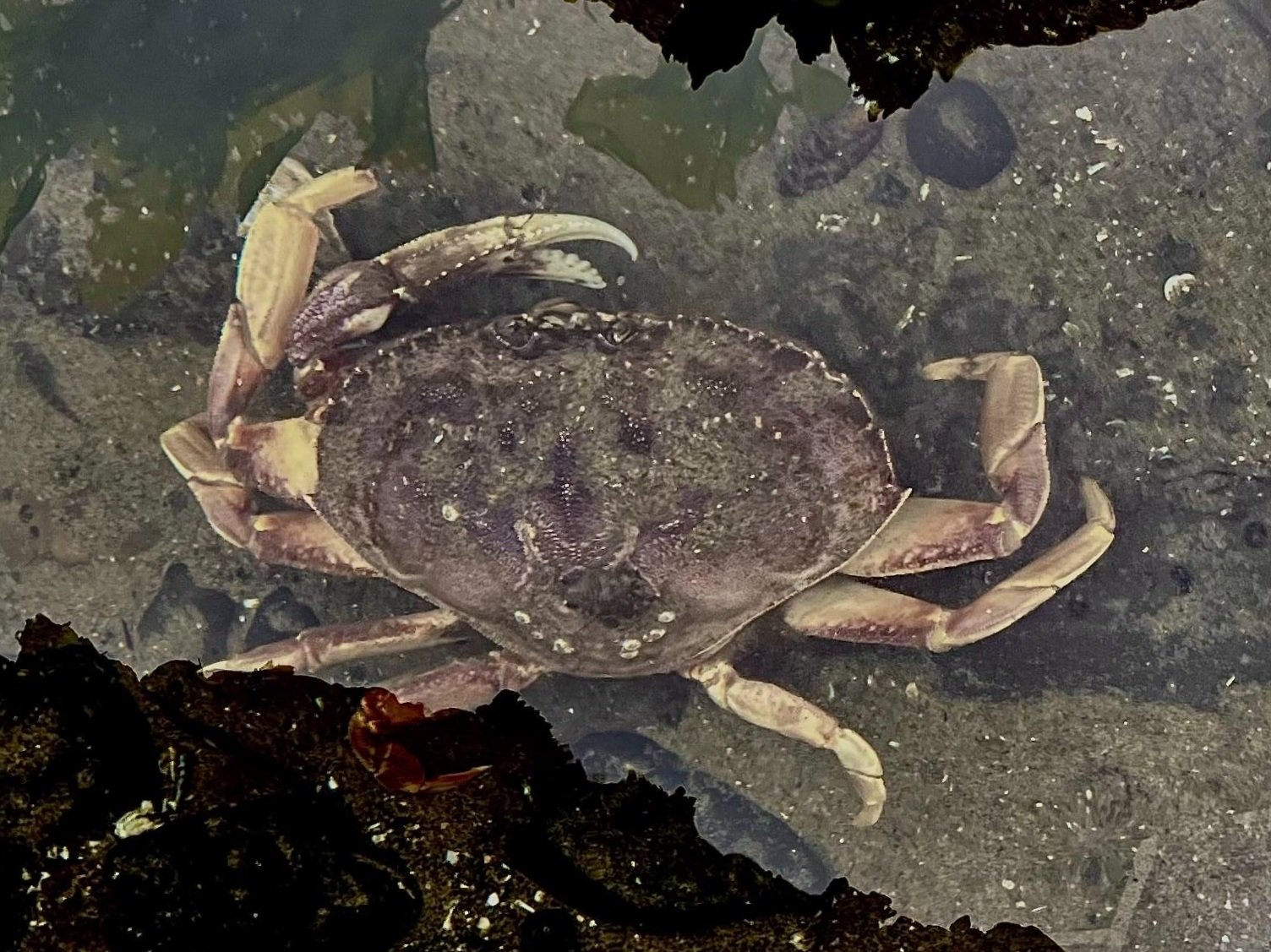Dungeness Crab (Metacarcinus magister)
Dungeness crab (photo credit: Lauren Rice)
Dungeness crab face (photo credit: Alex Bosse)
Description: The Dungeness crab is a popular food harvested along the Oregon Coast. Dungeness crabs have a purple-brown carapace (the hard shell on their back). The rest of their body, including their underside and claws, is yellow. The front half of their carapace is lined with 10 spikes on each side with the 10th being much larger. That 10th point is also the widest point on their body, where male Dungeness crabs can measure 25 cm across, with females measuring up to 18 cm across.
Habitat: Found from Alaska to California, Dungeness crabs live in the intertidal zone amongst eelgrass or on top of sandy or muddy surfaces, and they’re also occasionally seen in Haystack Rock’s tide pools. In these habitats, they often bury themselves in the sand or under rocks.
Diet: Dungeness crabs forage for creatures living within the sand, such as shrimp, worms, mussels, clams, and even other small crabs.
Tide Pool Tidbits:
25% of a Dungeness crab’s weight is edible “meat,” which is one of the highest ratios found across crab species.
When Dungeness crabs are cooked, their shells become a bright orange color.
Females can store sperm for multiple years leading to a single clutch having multiple fathers. Each clutch may have up to 2.5 million eggs - all under one apron!
Barnacles are often found growing on the front part of the crabs shell. They aren’t often found on the back since the crab buries itself in the sand, with only the front exposed.
References: Smithsonian Institution, Walla Walla University



